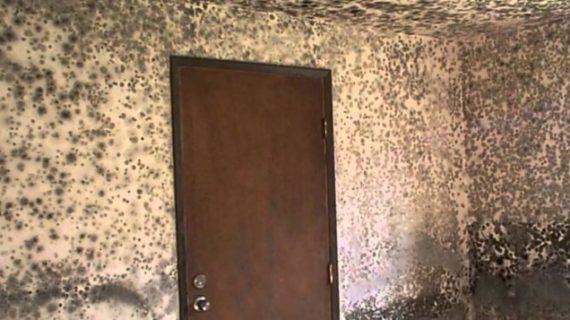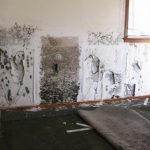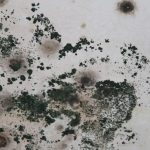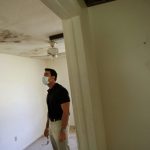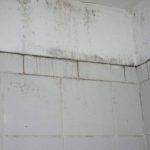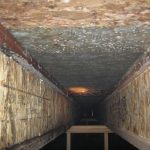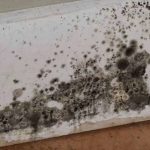Summer is a season for various mold types to grow, including Alternaria mold. You can expect the presence of this mold inside as well as outside.
Like any other mold types, Alternaria may create health risks for the most vulnerable people, especially those with a preexisting condition. Make sure you know about the mold’s characteristics, and what to do if you find it inside.
What Is Alternaria Mold?
Alternaria genus consists of around 50 species that usually grow from late spring to summer.
The most common species of this mold are Alternaria tenuissima and Alternaria alternate. While this mold is known as outdoor fungi, it can also be found inside a building, such as house or apartment.
Alternaria mold often grows together with other mold species; the most common include Fusarium, Stachybotrys, and Phoma mold. Since it is very common during spring and summer, Alternaria mold is thought as one of the most common allergens.
Where Is Alternaria Mold Found?
Alternaria mold is an outdoor mold, and its common habitats include plants, trees, grasses, and soil. It is also common in areas with relatively moderate climate, and the flying spores can be very dense.
During dry season or hot days (especially with a lot of wind), you can expect tens of thousands of spores per cubic meter in the air.
Since Alternatia mold is common in the outdoor, most indoor mold cases are usually caused by spores that are transferred into the building.
Most Alternatia mold species grow on surfaces such as wood or foods, but one species called Alternaria alternata is very common on materials such as iron, tiles, bricks, plaster, wallpaper, paper, and canvas.
Like any other mold species, this mold loves damp, dark, and humid indoor environment.
Alternaria mold often appears as dark or gray spots, which can spread into large patches if left without removal. It releases spores and musty smell into the surrounding environment, which present certain health risks with long exposure.
Alternaria Mold Symptoms
Due to its ubiquitous presence outdoor, the spores of Alternaria mold are often thought as the main cause of allergy cases, especially during spring and summer.
People with allergies often find themselves sneezing, having runny noses and red eyes, or feeling dizzy when walking outside. Similar symptoms can happen to people who are exposed to this mold indoor.
People with asthma, allergy, pulmonary disease, or compromised immune system are vulnerable toward mold spores.
While Alternaria mold is not a pathogen, there may be rare cases where opportunistic pathogens attack people with compromised immune system, such as those with HIV or in chemotherapy.
There are various possible symptoms that may occur as a result of mold exposure, but generally, they consist of:
- Sneezing, coughing, runny nose.
- Red, watery, and itchy eyes.
- Sore throat or irritation.
- Rashes and itchiness on the skin.
- Headache, dizziness, fatigue.
Long exposure can bring damages to health, especially for babies, children, and the elderly.
If you notice inexplicable symptoms that come during summer or when the air is humid, or if you realize that the house may have a leak problem, check the possibility of mold exposure.
Alternaria Mold Removal Tips

Since Alternaria mold is a common allergen, you need to remove it as soon as the first signs of infestation appear. If there are several areas that have moldy spots, you must do thorough checking to find any leak or moisture problems.
Fix the problem as soon as possible, or call professionals to do it.
Small infestation is easy to remove with proper equipment. Here are the removal steps you can take:
- Wear safety equipment
Spores will fly when you scrub a moldy area. Make sure to wear goggles, gloves, and mask when cleaning mold. Do not forget to throw away the sponge/scrub and mask you use for cleaning.
Wash the goggles, gloves, and clothes you wear when cleaning afterward.
- Use a mild detergent with bleach
Detergent and bleach are easy to get. Mix detergent and water to create a foamy mixture, and add a little cap of bleach. Use it to scrub the moldy area until clean. Repeat the process if possible.
- Use vinegar mixture
If the mold problem is very light, and you do not want to use detergent with bleach, vinegar mixture can be a solution. Mix one part of vinegar with three parts of water, and spray it to the mold.
Scrub hard until the spots are gone. You can also use this spray before cleaning moldy spots with detergent, so the acid in vinegar can wash away most of the mold.
- Throw away moldy stuff
If your carpet, doormat, upholstery, shower curtains, and draperies are moldy, they will spread mold to other parts of the house. You better throw them away by wrapping them in a double plastic bag.
Make sure the disposal place is far from your house and yard, or the mold will come back.
- Let fresh air and sunlight come
Alternaria mold thrives in areas that are poorly-lit, humid, and enclosed. Make sure you create better ventilation and light source in the house after cleaning the mold.
Install exhaust fan, add a window in places such as bathroom and ceiling room, and buy a dehumidifier. The last one is a good investment if summer tends to be humid in your area.
- Use anti-mold paint
If you paint your house, buy products that have an anti-mold formula. Or, you can mix fungicide in the paint before applying it on the wall. Make sure the formula is safe, and apply it using the directions from the manufacturer.
- Know when to call professionals
Sometimes, the mold infestation is so big, and requires professional service to remove. You need to know when professional remediation is necessary.
The first is when the infestation exceeds 10 square feet, and the second is when mold happens after a natural disaster such as floods.
Flood and mudslide are especially dangerous, because not only they make your house dirty and wet, but there are also germs and bacteria that are swept with the materials.
Household products are unable to remove aftermath problems caused by flood or mudslide.
Alternaria mold is a common allergen, but the exposure symptoms are by no means pleasant. Make sure you know how to remove it properly when you find the signs in the house.
